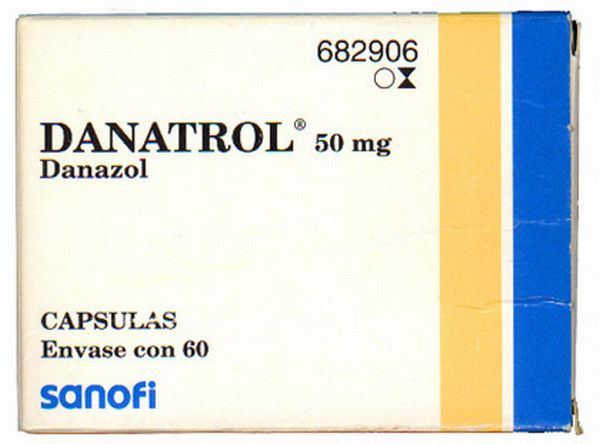
Danocrine (danazol) is also known as 17alpha-ethinyl testosterone. Danazol is the drug of choice for long term prophylaxis of hereditary angioedema. It is among the front line drugs for treatment of endometriosis.
Plausible mechanisms for which there is evidence for activity in this area include suppression of the midcycle surge of LH/FSH at the hypothalamic level, inhibition of the transcription of the gene for the estrogen receptor in monocytes, inhibition of estrone sulfatase (required to convert estrone sulfate to estradiol), and stimulation of B cells.
Danazol therapy is also anti-osteoporotic, whereas many other drugs for endometriosis cause loss of bone mass.
A disadvantage of danazol therapy is that approximately 10% of patients experience hepatocellular damage, and virilizing side effects are frequent at therapeutic doses for treatment of endometriosis. However, application via a vaginal suppository has proven an effective way to target the drug for treatment of endometriosis, which should reduce side effects.
Danazol has also been useful for treatment of fibrocystic myopathy of the breast, mastalgia, idiopathic thrombocytopenic purpurea, mixed tissue disease with protein S deficiency, autoimmune hemolytic anemia, menorrhagia, and “severe PMS.”
Danazol binds to low affinity glucocorticoid binding sites (LAGS) in the liver.
Plasma fibrinogen and lipoprotein (a) levels decrease with danazol treatment, and plasminogen levels rise, thus inhibiting the process of thrombosis.
About the author
Bill Roberts is an internationally-recognized expert on anabolic steroids and performance-enhancing drugs (PEDs). He received a bachelor degree in Microbiology and Cell Science and completed the educational and research requirements for a PhD in Medicinal Chemistry at a major American university.
Bill entered the nutritional supplement industry prior to completing his doctoral thesis but his education was invaluable so far as being able to design/improve nutritional supplement compounds, since it was in the field of designing drug molecules and secondarily some work in transdermal delivery.
His education was not specifically "geared" toward anabolic steroids other than expertise with pharmacological principles having broad applications. This has allowed Bill to provide unique insight into the field of anabolic pharmacology with knowledge of points which he would not have known otherwise.